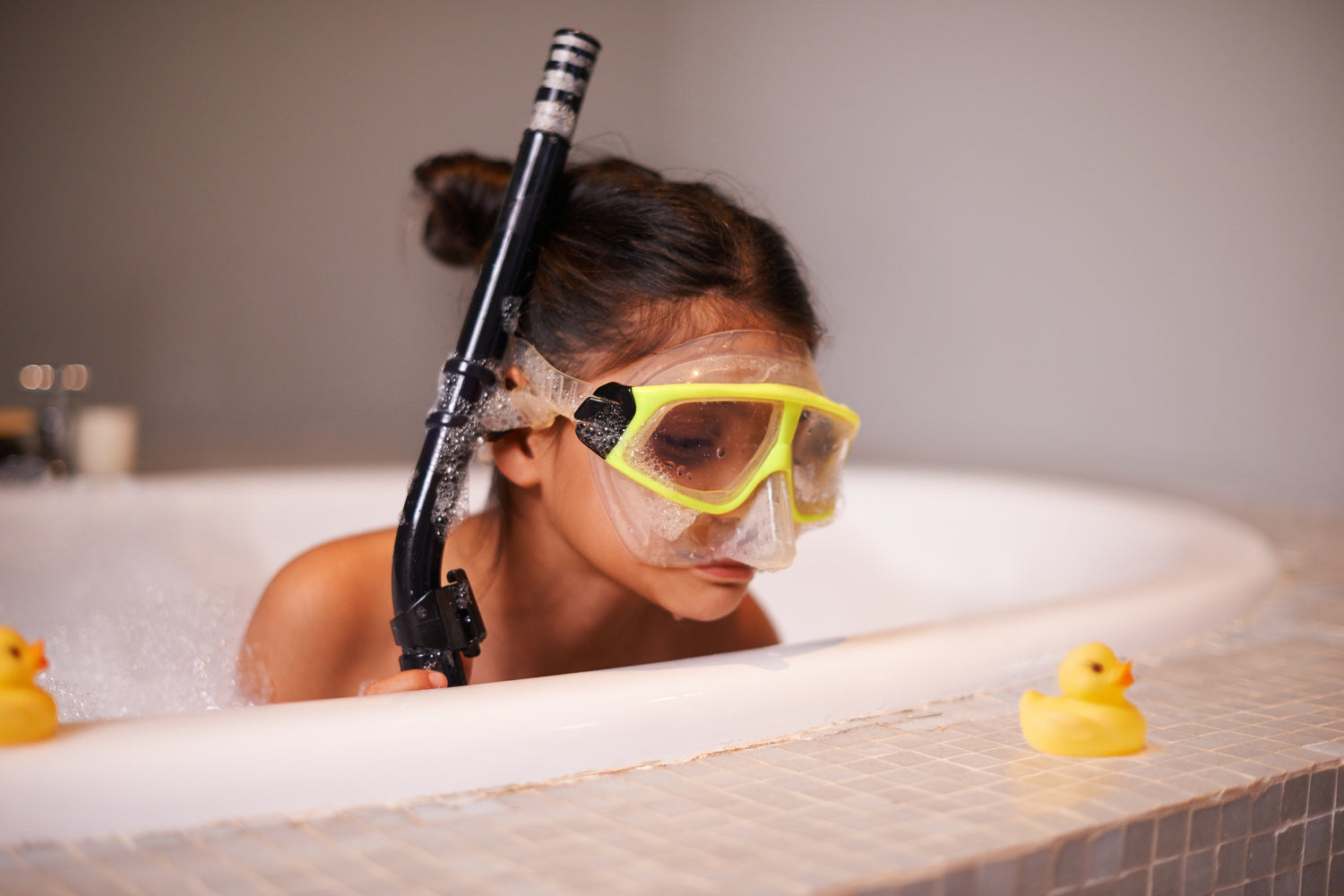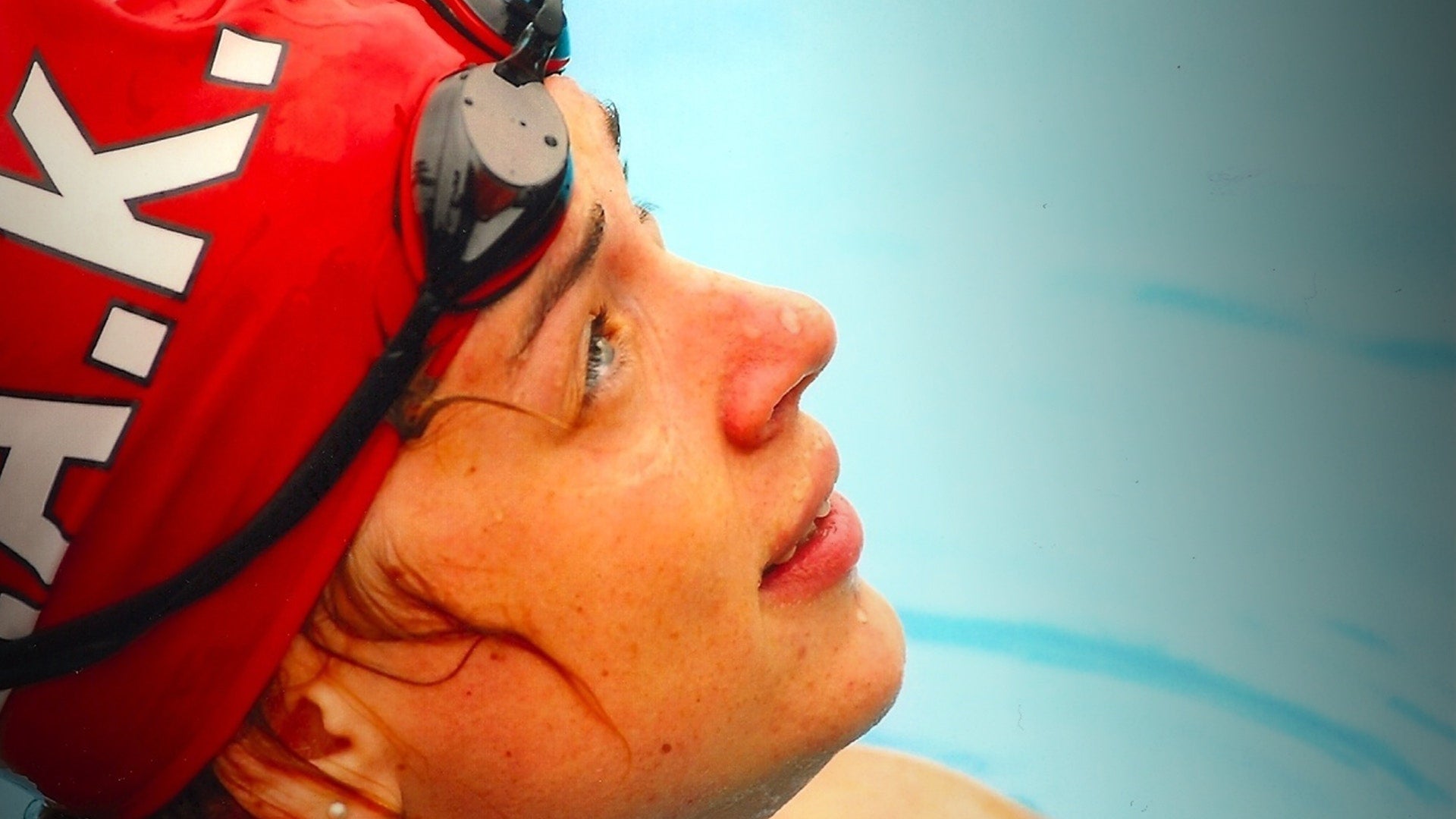If you give your child three baths per week, you can expect to spend 390 hours supervising bath time before he turns six. That's nearly three weeks of your life spent on the bathroom floor. If your child prefers daily baths, it'll be closer to a month and a half.
If bath time is an endearing nightly ritual, those will be weeks well spent. However, if bath time is frustrating for you or your child, you might be wondering when you can start leaving him alone in the tub.
Part of the confusion is that there are lots of acceptable answers to this question. The answer you choose will be a combination of safety, privacy, and practicality.
Answer #1
When he is statistically less likely to drown
Reports on drowning are good to warn parents of the dangers posed by our bathrooms, but they often exaggerate the actual risks posed by bathtubs. The Washington Post, for example, reported that "drowning overall is the leading cause of unintentional injury death" for children between ages one and four, and there were a total of 7,543 drowning deaths for this age range over a 16 year period.
Although those figures are accurate, they are misleading. The report includes all sources of water, such as oceans and swimming pools. The article later references the approximately 37 toddlers that drown in the bathtub annually.
Those 37 children are 37 too many. Nonetheless, reporting like this makes it seem as though bathtubs are uniquely dangerous items. If we look at those numbers in context, the bathtub seems much less dangerous, at least for older children.
Let's start with a low estimate of the number of baths taken by U.S. toddlers. If they average one bath per week, and there are approximately 8 million toddlers in the U.S., that's over 400 million baths per year. Let's assume that half of those baths are shared between two children, bringing the total number of baths down to just over 200 million. The bath is still overwhelmingly survivable.
The age range covered by the word "toddler" is also misleading, because drowning deaths taper off before many children outgrow toddlerhood. In a report about in-home drownings, the Consumer Product Safety Commission found that 82 percent of drowning deaths occurred in children younger than two years old, suggesting that children under age two are at significantly increased risk of drowning than two-year-olds (nine percent), three-year-olds (five percent) and four-year-olds (three percent).
Answer #2
When he is statistically less likely to get injured
Falls are the second most fatal injury in the United States, and 81 percent of bathroom injuries are falls. Although we are likely to think about them less often, slips, trips, and falls are actually the most common bathtub injury, far likelier than drowning. So if you want to help protect your child from accidental injury, you might look to see what ages kids tend to stop getting injured in or around the bath.
The risk of slips, trips, and falls begins to decrease at about five years of age, according to a report in Pediatrics. More than one half of all childhood bathtub injuries happen to children four years old and younger.
The authors of the Pediatrics report recommend supervision as a preventive measure for drowning but note that supervision alone is generally not considered sufficient prevention against slips, trips, and falls. In other words, your presence in the bathroom is unlikely to make a substantial difference in whether or not your child is injured in the bathroom. The report recommends "passive prevention" methods, like installing tub mats and handlebars, to prevent injury.
Answer #3
When she wants privacy
Drowning and injury are the two greatest safety concerns when deciding whether or not it's time for a kid to bathe alone. For parents of slightly older children, the more pressing concern may be privacy.
The privacy question is far simpler than online parenting forums would suggest. There's no need to develop different timelines for moms bathing sons or dads bathing daughters. There's really just one yardstick: whether or not your child has asked for privacy. If your child has asked for privacy, consider offering it. If your child hasn't voiced concerns about privacy, and bath time is a pleasant ritual for all parties, bathe on.
If she has voiced concerns about privacy, and you've countered with concerns about safety, revisit your own motivations for doing so. It's important to separate concern for safety from concern for her inevitable separation from you.
Answer #4
When most parents do it
If you feel comfortable with the safety risks and the privacy concerns, you might just opt for the average: 6.7 years.That's the age determined by a report in JAMA Pediatrics. Researchers asked parents about a number of moderately dangerous activities (crossing the street, taking a bath) and asked them to say what age they would allow their children to complete those activities unsupervised. The average age for independent bathing was 6.7 years.
One surprising finding of the study was that the parents' answers changed if their children had recently rode with an impaired driver. When children had ridden with an impaired driver within the last month, their parents tended to offer younger answers to the questions. Their answer for independent bath time was nearly 10 months earlier: 5.9 years.
Although this finding was focused on parents engaged in an inappropriate level of risk (driving while impaired), it holds valuable lessons for parents willing to engage in more moderate risks.
Because there is no magic age at which all children are suddenly safe, all parents have to make risk and benefit calculations. You may judge that providing your child with more independence is worth tolerating additional risk.
A word on "one second"
The answers included above are guidelines to help you evaluate the risks of letting your child bathe alone. They should not be an excuse to let you leave the bath "just for one second."
That's because "one second" is almost never actually only one second. Even parents reaching for towels in their bathroom-adjacent linen closets are gone for more than one second.
The problem with "one second" is that it's less a measurement of time than a description of time. We use it to describe quick tasks, like stirring a pot or hanging a shirt or even using the bathroom ourselves. Yet it's easy to get distracted by a kitchen spill, the rest of the laundry pile, or even our phones. In the CPSC report on in-home drownings in children under age five, more than 30 percent of the deaths occurred during a "brief lapse in supervision." You're a sleep-deprived parent of a young child, not a human metronome, so don't trust your ability to gauge "one second."
Even if you're just reaching for a towel, or sending one text message, or brushing your teeth, or doing any other activities with one eye on the tub, "one second" presents a different problem. You're making the decision to transition to independent bath time during bath time. That decision, like bath time itself, works better when it commands your full attention.



